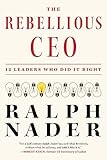Daily in countless classrooms across the U.S., teachers are using standardized curriculum to prepare their students to take and score highly on high-stakes achievement tests. But critics say forcing K-12 schools to follow a single standard of education is no cure-all. In fact, such an approach places students and teachers into a historic trend of capitalism to exert ever greater control over the workplace.
I spoke with five classroom teachers in California’s capital city. They have a range of opinions about the state forcing all teachers to use standardized curriculum to raise students’ scores on achievement tests.
Bob Priestly, who currently teaches 7th-grade science at Sam Brannan Middle School in the Sacramento City Unified District, has a critique of the standard curriculum and achievement tests. He has been a teacher for 16 years.
“We aren’t drones now, but before standardized tests there was more freedom for teachers to create their own approaches to the subject matter such as life science,” he said. “Such freedom is unwelcome now and teachers can be administratively disciplined for that.
“The traditional middle school before standardized tests was a place where kids explored new things inside and outside the classroom in an ‘exploratory wheel’ of elective classes, such as art, drama, second languages, and shop. That’s been wiped out as a result of penalties for sub-par test scores. If they score under the proficient level on the tests, students can lose their elective classes and have to take up to two language arts and math classes each (per semester) to attain proficiency the next time.”
The test scores of Brian Laird’s students at West Campus High School in the Sacramento City Unified School District rank among the highest in the city and California. He currently teaches advanced placement and college prep economics and U.S. history. His students take the state tests May 1-14, the results of which he uses to find any instructional areas for possible improvement.
“Testing helps students only in as much as it helps me to teach the standardized curriculum,” said Laird, who began teaching in California’s Silicon Valley city of San Jose 12 years ago, arriving at West Campus in 2000. In his view, the state curriculum is generally “helpful to have” as a “map for instruction.”
Rose Penrose currently teaches 6th-grade English at the Natomas Middle School in Sacramento’s Natomas Unified School District. In her sixth year of teaching, she instructs three 88-minute classes of English, with 30 students in each. Penrose and her fellow teachers, by department and grade level, create a “pacing guide” to help them to identify when and how to teach in conformity with state curriculum standards for achievement tests, which her sixth graders began in mid-April.
“Having accountability and standards is good,” Penrose said. “They give everybody a measure of where we want to be. I know that my kids know the material, but the test phrasing can stump them sometime.”
Sheryl Tolson currently teaches second grade at the Anna Kirchgater Elementary School in Sacramento’s Elk Grove Unified School District. The fourth-year teacher’s 20 students took the standardized tests in mid-April. Test scores will be ready in August to help third-grade teachers pinpoint which instructional areas to focus on, she said.
“I will also get an idea for my next year’s class on how to teach students more effectively. If the students’ reading comprehension scores are low, for example, I can work harder on that.”
The federal No Child Left Behind (NCLB) Act, which Pres. Bush signed in 2002, mandates that American students score higher each year on the standardized tests. In California grades 2-11, 37 percent of students’ Standardized Testing and Reporting (STAR) program tests scores in math and language arts must reach the proficiency level, up from 24 percent originally, said Pam Slater, spokeswoman for the state Dept. of Ed.
“Every year the standards we teach are ratcheted up,” said Priestly, who teaches between 26 and 35 students in five classes for which he uses the state curriculum. The students in part learn about the processes of sex cell division and single cell division.
“We’re drowning in standards and tests, which are a vice squeezing students,” he added. “I’m driving students at a fast pace towards taking the tests and accomplishing so many standards.” The NCLB sanctions for STAR test scores weigh heavily on Priestly’s mind and those of his fellow administrators and teachers. “We’re all in this thing together,” he said, while lamenting the inadequate means which the NCLB law provides to schools to meet the federal mandates.
Slater of the state Ed. Dept. gave a nod to this aspect of the NCLB. “The federal funding issue has been a criticism,” she said.
Across town from Priestly, Debra Nordyke teaches kindergarten at the Del Paso Heights Elementary School in North Sacramento. Her five- and six-year-old students take tests on math (measurements and shapes) four times a year. Testing on language arts (reading and vocabulary) is three times per year.
“Testing has benefited the kids by improving their language arts and math skills,” she said. Her district and Houghton Mifflin Harcourt Publishing Company (a $2.5-billion firm which calls itself “the preeminent educational publisher in the United States”) create the curriculum and tests which Nordyke teaches to. She has been teaching K-4 students for 23 years in the Del Paso Heights School District, one of several others which will join the new Twin Rivers Unified School District on July 1.
According to Nordyke, before the advent of the standardized curriculum and tests, teachers had to create their own. In that pre-testing era, this could be a stiff task for newer teachers. While acknowledging that standardized curriculum and tests have helped primary grade students to gain mastery of literacy and math, she noted that, before then, students and teachers had more time for art, drama, movement, music, and science. “That extra time improved students’ creativity and social skills,” Nordyke said.
California Senate Bill 376 created the Standardized Testing and Reporting (STAR) program in 1997. The California State Dept. of Education develops, reviews, and revises STAR testing and the standard curriculum, Slater said.
STAR tests for grades two through 11 have four subject areas: language arts, math, science, and social science. Student test scores are ranked from outstanding to proficient to basic to below basic to far-below basic.
Against this backdrop, a new peer-reviewed study in the journal Educational Policy Analysis Archives by scholars at the Rice University Center for Education raises crucial questions about state-federal policy relating to standardized tests and students who score sub-proficiently on them.
Rice’s multiple-year analysis of more than 270,000 Texas students criticized the use of a single standard to measure a student’s achievement. “The degradation of the curriculum into test drills, which have little relevance beyond the state test, distances students who otherwise wish to persist to graduation, exacerbating the likelihood they will leave school,” the study reported.
In other words, forcing schools, students, and teachers into a box of escalating standards alienates youth and thereby increases the likelihood of their becoming dropouts versus graduates.
Where is this 11-year trend of state standards that marry school curriculum to STAR tests headed? In California and nationally, school districts and county education departments with tests scores below NCLB mandates face penalties pegged to the number of years in which annual progress falls below the measure of proficiency. The penalties for being out of compliance with this NCLB mandate put such under-performers into the “program improvement” category. The NCLB penalties range from replacing school staff in year three to a state takeover in year four. And that’s not all. “Once schools are in [public improvement] for five years they can be forced into privatization,” write Steven Miller and Jack Gerson in their article titled “The Corporate Surge Against Public Schools.”
California’s state education board approved a new approach to program improvement crafted by Gov. Arnold Schwarzenegger and state Superintendent of Public Instruction Jack O’Connell on March 13. As with students whose scores are sub-proficient, programs are ranked according to their need for improvement: intensive, moderate, light, or other.
Del Paso is in the category of “other,” having narrowly missed federal accountability targets. The district has been placed in year three of program improvement status, said Fred Balcom, director of the accountability and improvement division at the California Education Dept.
Priestly is working with two Sacramento-area schools that are in multi-year program improvement. He declined to name either school.
Below-level STAR test scores are hardly the lot of Laird’s students at West Campus High School. There, 500 students apply for 200 open slots in the 800-member student body. That number is roughly a third of the enrollment at high schools such as Burbank, Hiram Johnson, Kennedy, and McClatchy in the Sacramento City Unified School District.
In Laird’s view, the state curriculum is generally “helpful to have” as a “map for instruction.” However, Laird thinks that some of the textbooks he uses with his students are “incredibly simplistic.” Maybe that helps to explain this response to standardized education.
Students dislike the STAR tests, according to Laird. Such a stance put teachers in a dicey spot. “We ask students to please do their best on the tests. That helps to keep us in the good graces of administrators and politicians.”
There have been 11 years of momentum to unify California’s school standards to improve students’ test scores. This trend of standardizing education comes from the dawn of industrial capitalism, not always easy to see, given the misleading appearances of school accountability that can fog such history. In brief, the capitalist system spawned factories with work forces tied to the time clock to boost productivity, the amount of goods and services workers create per hour. A class of owners sought to remove labor creativity from their hired help and replace that with uniformity for reasons of control and profit.
To be sure, private profit is not a driving force in U.S. public schools. But forcing an industrial regimen of conformity upon the learning process can and does push youth and their teachers away from classroom time for creative discovery, thanks to the NCLB law.
What current learning standards backed up by the force of federal and state laws assume but fail to actually make is the case for one way to best measure youth’s learning and teachers’ instructing. It should be no surprise that the satisfaction of students and teachers in the politically charged regimen of K-12 schools is a mixed bag.










